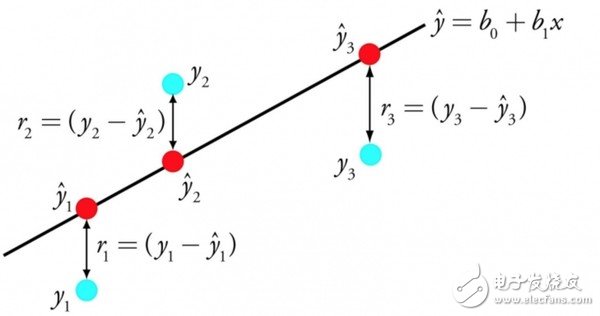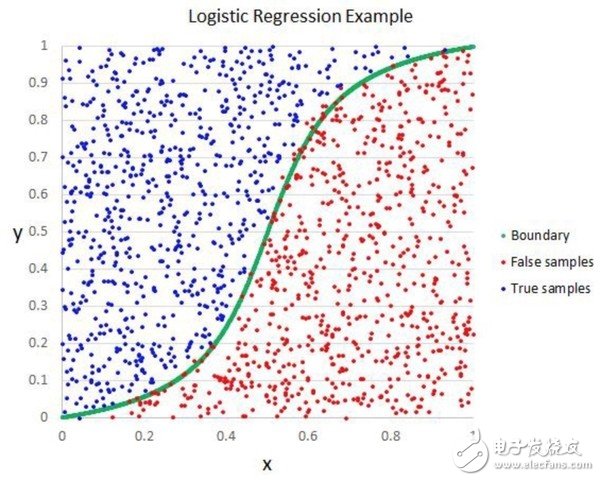Machine learning technology not only affects the current field of artificial intelligence. In my opinion, the algorithm technology in machine learning may even affect the depth and breadth of big data application in many fields. For machine learning algorithms, we can Described as learning an objective function f that best maps the input variable X to the output variable Y. There is a general class of learning tasks. We want to predict Y based on the input variable X. We don't know what the objective function f is like. If we have known it for a long time, we can use it directly without having to learn from the data through machine learning algorithms.

Next, let's take a look at some common machine learning algorithms and their principles.
Linear regression
Linear regression is a widely used concept and technique for machine learning applications. Linear regression finds a set of specific weights called coefficient B. Expressed by the line represented by the equation that best fits the relationship between the input variable x and the output variable y.

Different techniques can be used for linear regression models. For example, the ordinary least squares method of linear algebra, and the gradient descent optimization algorithm. Linear regression has been around for more than 200 years and has been extensively studied. According to experience, this algorithm can well eliminate similar data and remove noise in the data. It is the fastest and simpler algorithm of choice.
Logistic regression
Logistic regression is another machine learning algorithm borrowed from the statistical field. Like linear regression, its purpose is to find the parameter values ​​corresponding to each input variable, but the difference is that the transformation used to predict the output is a A nonlinear function called logisTIc.

It is precisely because of this way of model learning that the predictions made by logistic regression can be treated as probability values ​​of two categorical data input as 0 and 1. This is very useful in some questions that need to give reasonable predictions. Just like linear regression, logistic regression can perform well in terms of features that need to be removed from output variables and similar features. It is a fast and efficient model for dealing with the two classification problem.
Linear discriminant analysis
Logistic regression is a two-class algorithm problem. Of course, if more classification is needed, the limit line discriminant analysis algorithm, that is, LDA is a better linear classification method. The LDA contains statistical properties for each type of input data (including intra-class sample mean and population sample variables). The prediction is performed by calculating the discriminant value of each class and based on the maximum value. This method assumes that the data is subject to a Gaussian distribution (bell curve). So it can better remove outliers in advance. It is a simple and effective way to predict problems for classification models.

Regression tree analysis method
An important algorithm for decision tree modeling and predictive modeling. For machine learning, a binary tree can be used to interpret the decision tree model. That is, a binary tree model is built according to the algorithm and data structure. Each node represents a The input variable and the bifurcation point of the variable can be assumed to be a numerical variable, and the leaf nodes of the tree include the output variable y for prediction. Each branch of the tree reaches the leaf node and outputs a classification value of the corresponding leaf node.

Naive Bayes
This model includes two probabilities. They can be calculated directly from the training data: the probability of each class; the conditional probability of each class given the value of x. According to the Bayesian theorem, once the calculation is completed, the probabilistic model can be used to predict the new data.
Capacitive Type Oil Detector,Oil Contamination Detector on the Piping Line,Oil Detector
Taizhou Jiabo Instrument Technology Co., Ltd. , https://www.taizhoujiabo.com
